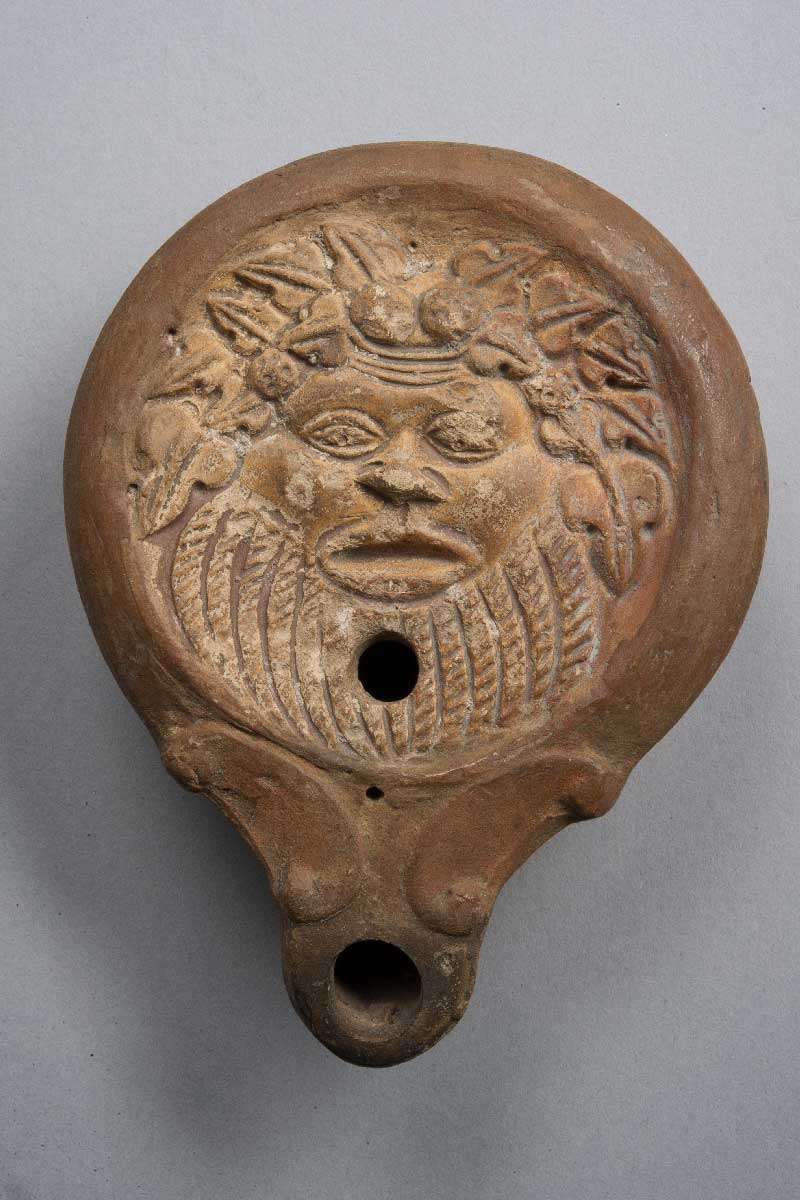The Roman House at Hopkins | The Art of Light
Lamp with Wreathed Silenus
By Michele Asuni

Measurements: Length: 9.3cm, Width: 7.0cm, Height: 2.8cm
Material: Ceramic
Culture/Date: Roman, 1st c. CE?
Provenance: Unknown
In Greek mythology, Silenus was the tutor of the god Dionysus. His features are similar to those of a satyr, but he is usually depicted as being considerably older. Silenus was often featured in comedies and satyr plays (e.g. Euripides’ Cyclops and Plautus’ Rudens). As early as the 5th century BCE, the terms silenus and satyr began to be used as synonyms. In his Symposion, for example, Plato compares his teacher Socrates to both Silenus (216d) and the satyr Marsyas (215b). Silens and satyrs were considered to be lascivious creatures, who often chased nymphs through the woods – a trait they share with the god Pan. Often depicted as dancing with the nymphs and drinking wine, these creatures were associated with the thiasos, Dionysus’ ceremonial group of followers.